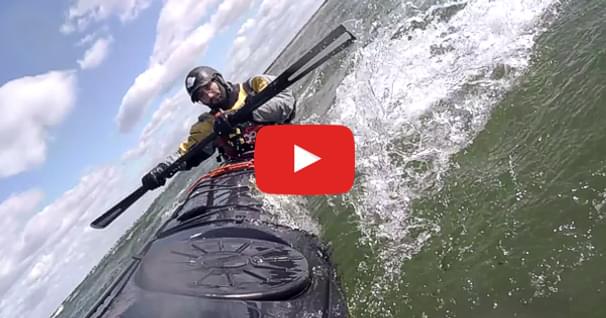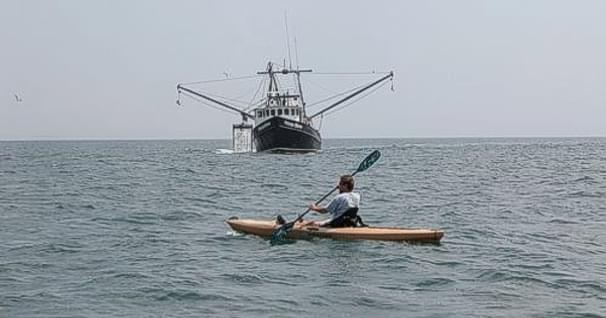Sea Kayaking in Wind & Weather
When sea kayakers talk about conditions, they'll usually have wind in mind because no other element affects us more. Wind shapes the surface of the water and dictates our progress across it.
Headwind/Tailwind
Paddling into a headwind is just plain hard work, and if the wind is strong enough, it just isn't worth it.
Paddling with the wind is quite a different story. You'll cover amazing ground and can often surf the waves that the wind stirs up. These waves can provide an amazing boost of speed.
Weathercocking
The trickiest wind conditions are when the wind is blowing from some side angle. This usually means that you'll need to contend with waves coming at you on an angle, as well as the tendency of your kayak to weathercock.Weathercock means that your kayak will turn into the wind, and this tendency to do so makes it difficult to keep your boat on a straight course.
This is where a rudder or a skeg will help out, because they can hold your stern in place. You might find that you just need to paddle harder or sweep more on the windy side of your kayak to keep your boat going straight. If you have waves coming in from the side as well as wind, keeping your course can be even more difficult.
50 years of lightweight, maneuverable, high-performing kayaks.
Check out this interview with Tom Keane, Eddyline Kayaks Co-Owner, on their journey!
Predicting Wind
Although it's difficult to make any firm predictions about what the wind is going to do, there are usually some common wind themes in an area. It's worth asking the locals about them. You might find that onshore winds pick up in the afternoon, which means you'll want to paddle out the inlet in the morning. Similarly, you might want to paddle down the inlet in the afternoon, so you get the help of a nice tailwind.
Fog
Any weather that limits your visibility and makes for rougher seas is something to be concerned about. It needs constant assessment. Fog can be incredibly eerie and disorienting and can roll in very quickly. You're always best off heading to shore when fog hits. But if you need to keep going, keep your ears open for other vessels and choose a route that you can be the most sure of. For example, I'll intentionally head to shore further south of my end destination so that when I get to shore, I can follow it north until I get there.
Related Articles
I got the chance to play in some rough conditions out on Long Island near Democrat Point (NY), along…
One thing that is guaranteed with the change in the seasons, is a change in the weather. I've found that…
Few moments in canoeing are more blessed than when, after a long and wearing day, the wind suddenly…



